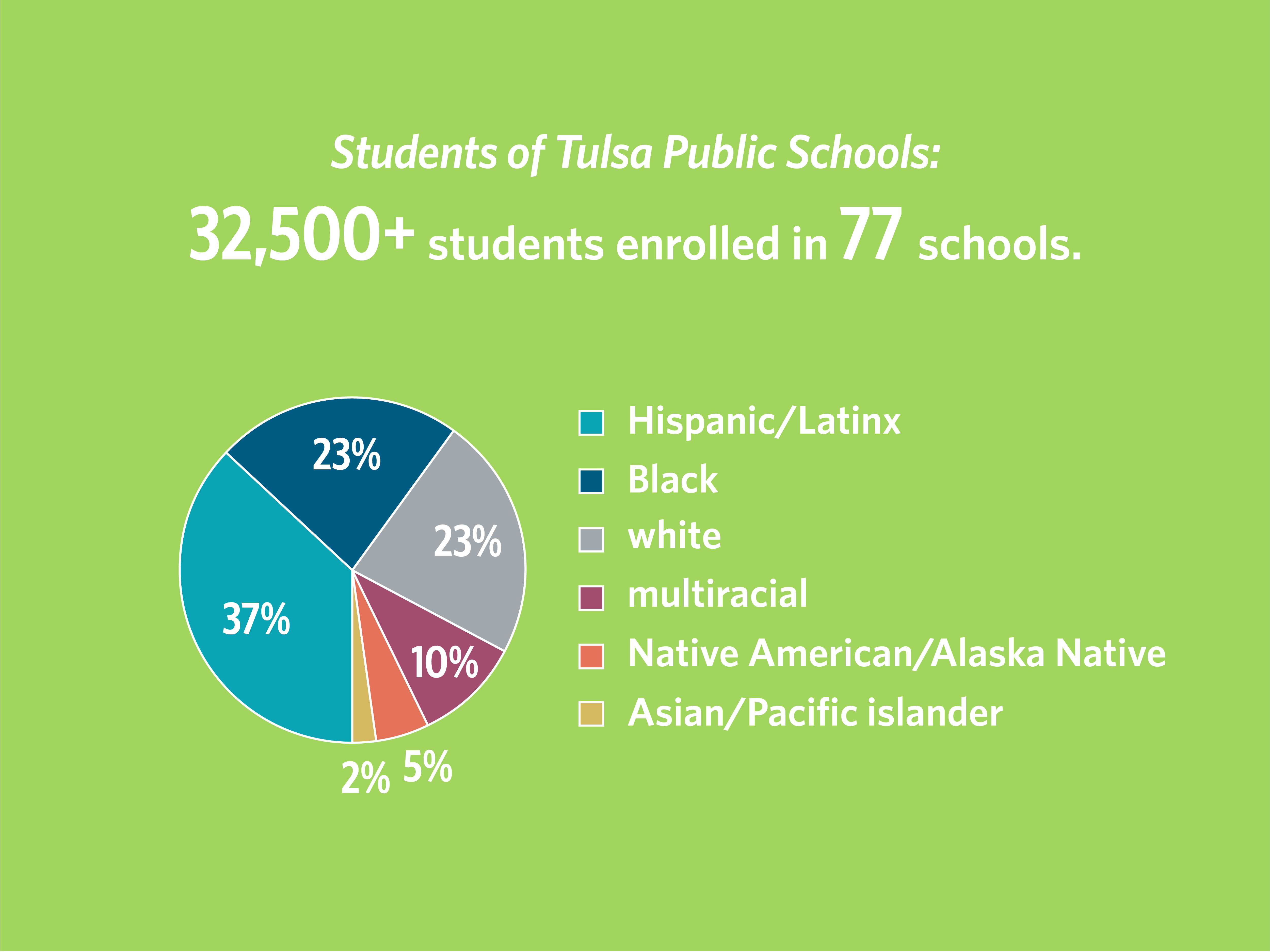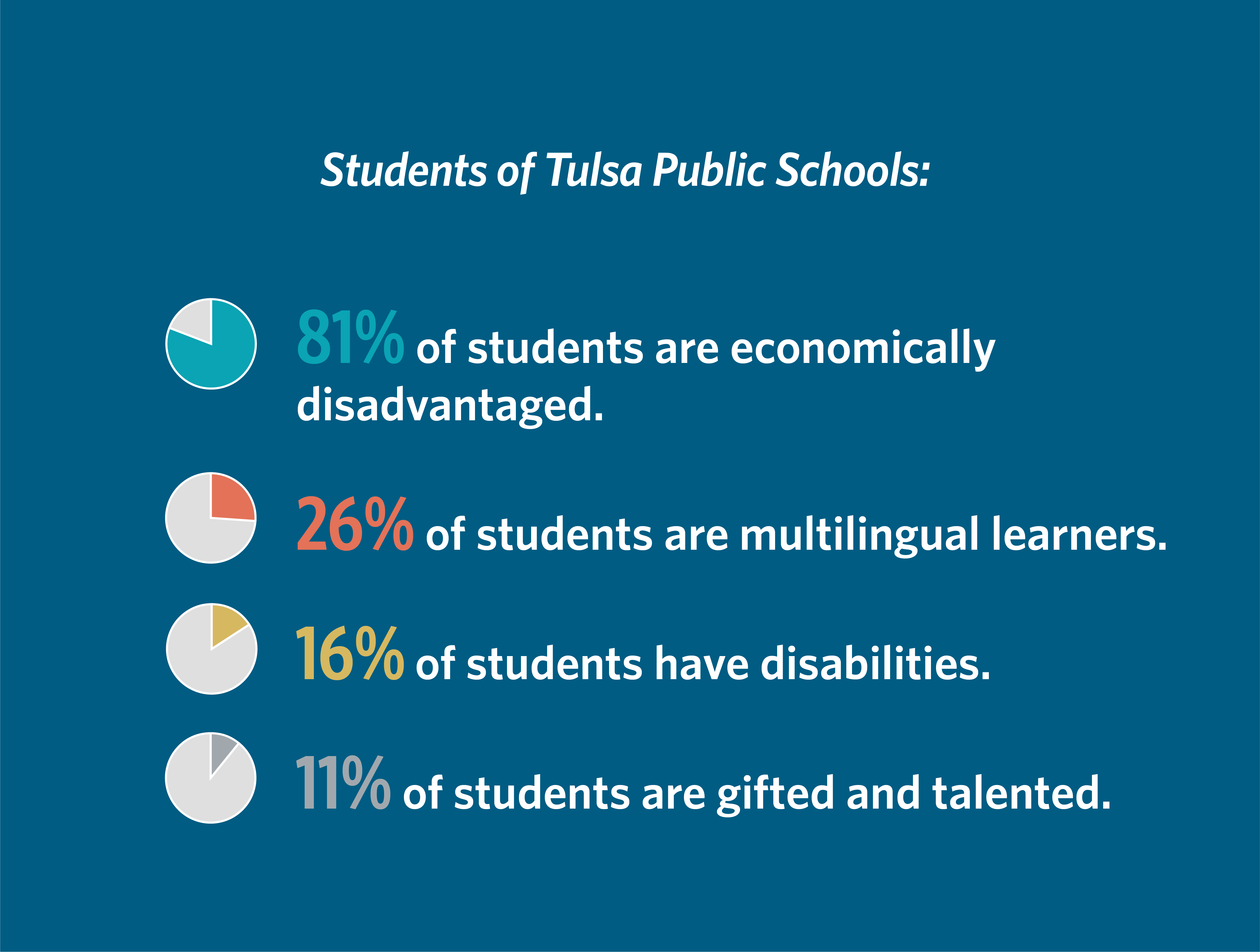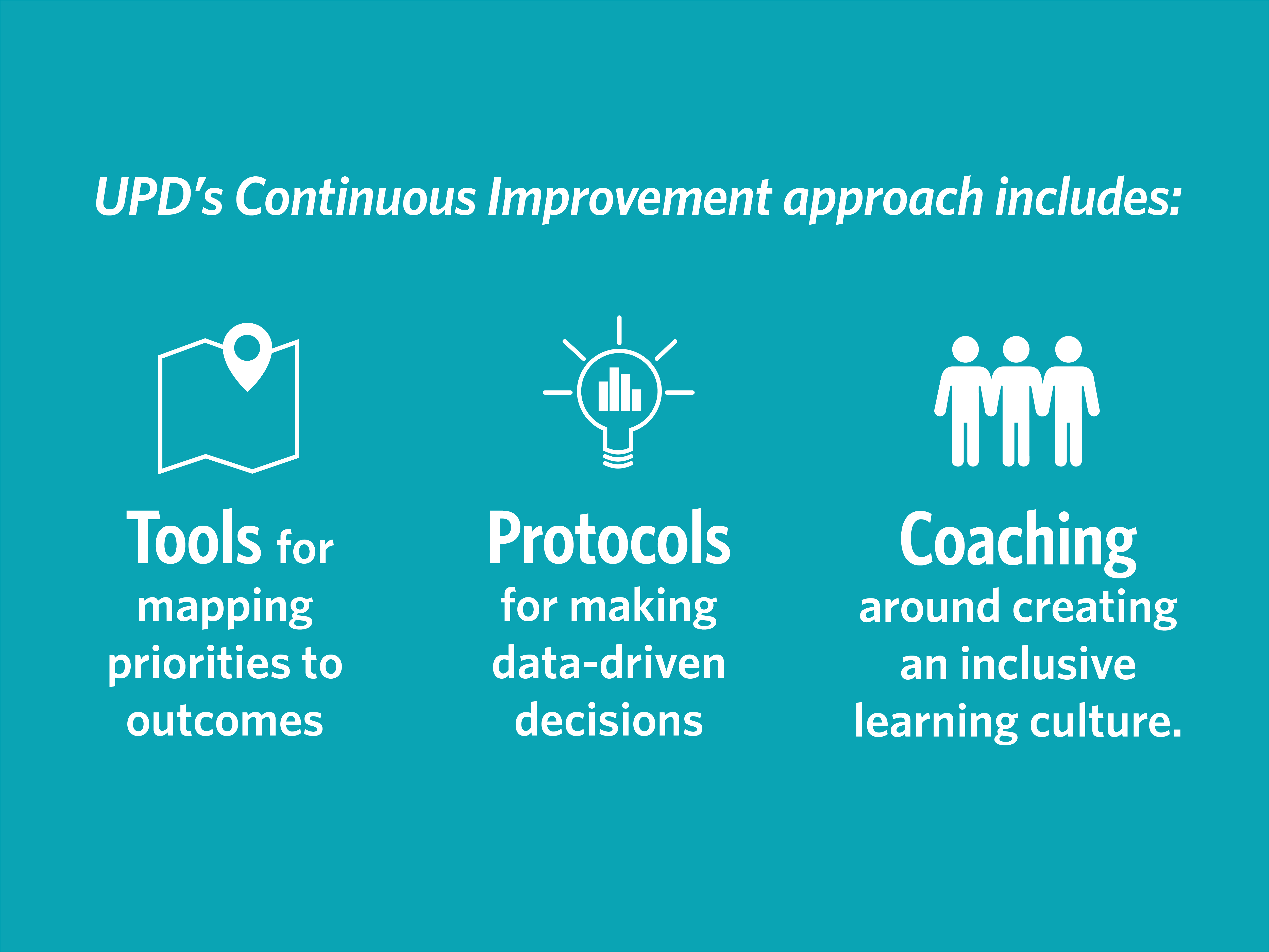Reopening Tulsa Public Schools with an Equity Lens.
PARTNER: Tulsa Public Schools (TPS)
SERVICE AREA: ADEI & Continuous Improvement
LOCATION: Oklahoma
TIMEFRAME: April 2020 – June 2021
The Approach
Developing Strategy Maps and Implementation Plans During the Summer
UPD helped a cross-functional team to develop Strategy Maps for five priority areas: Safety, Wellbeing, Supporting Educators and Staff, Grade-level Learning, and Family Engagement. Each Strategy Map identified critical implementation and outcome metrics as well as explicit equity components, including addressing how each strategy would impact the least-reached students and families and what the potential for inequitable impact was.
Short-Cycle Continuous Improvement (CI) Sessions Throughout the School Year
To ensure the successful implementation of their five priority areas during reopening, UPD facilitated weekly Continuous Improvement sessions for (and later, with) TPS teams. UPD worked within the existing team structures to build their team skills around moving from data to action, addressing equity challenges during implementation with support from the district’s Equity Team, maintaining a structured process during implementation, and effectively coordinating across departments.
We focused on the following CI practices during our facilitated sessions:
- Flexibly refining the purpose, protocols, and structure of team sessions to ensure time was spent productively
- Choosing essential questions for each session that centered equity and focused on one of the five priority areas each week (Each priority area was revisited approximately every four to six weeks)
- Building team member data literacy through clear data visualizations and connected reflection questions
- Using equitable facilitation practices
- Post-meeting feedback which focused on team members taking a learning stance
The district also committed to people-centered practices by distributing leadership and ownership of decisions throughout the teams in the continuous improvement process and gathering regular feedback from staff at all levels through the use of “Pulse Check” surveys to align strategic shifts to the needs of the people they serve.
Using data to inform their strategies.
We grounded the weekly CI sessions in qualitative and quantitative data from the district (Such as Online Engagement, Attendance, Grade Failures, Wellness, and Dropout) to understand the status of implementation for each strategy.
The teams used this information to reflect and commit to action on what was working, what needed adjustment, and bigger-picture strategic decisions for each priority area.
The Impact
With CI structures now in place internally at TPS, staff and leaders can see the impact of their strategies and use data to make sure they’re delivering on their promises to all students and families.
The continuous improvement process was the backbone for the development of a powerful district-wide learning culture that enabled critical conversations about inequities across the district, provided opportunities for staff to apply their training around equity, and contributed to mitigating the cycles of oppression that are inherent in our public institutions.


